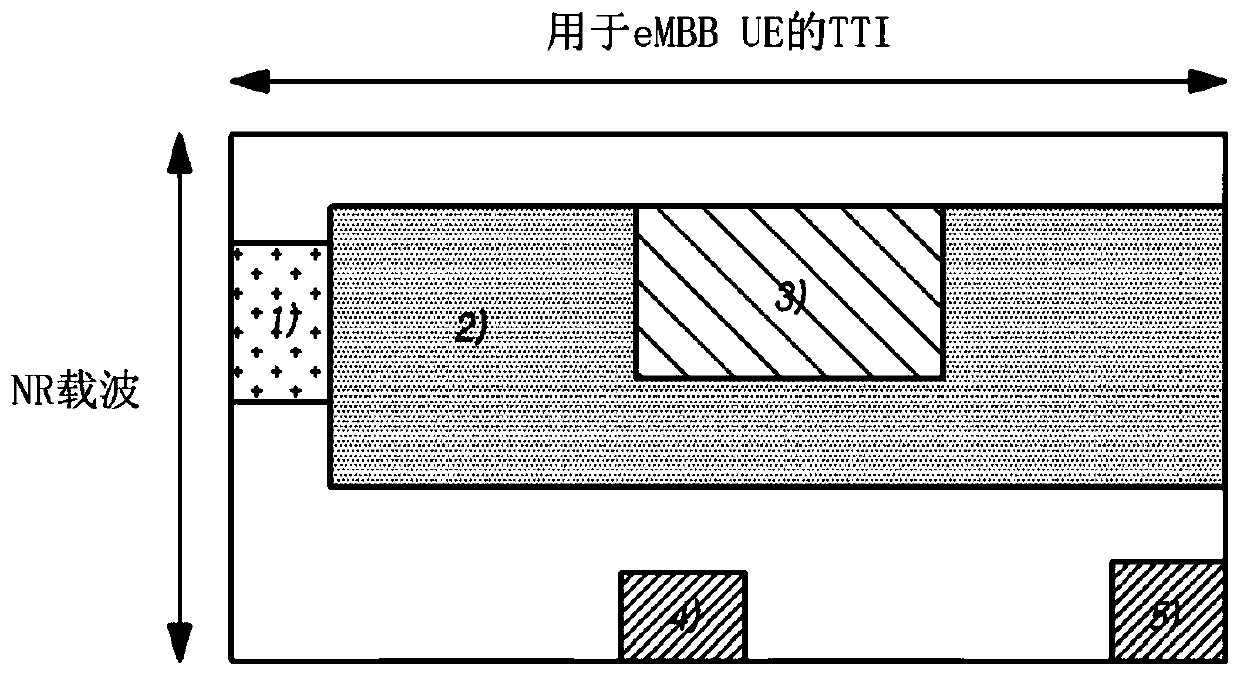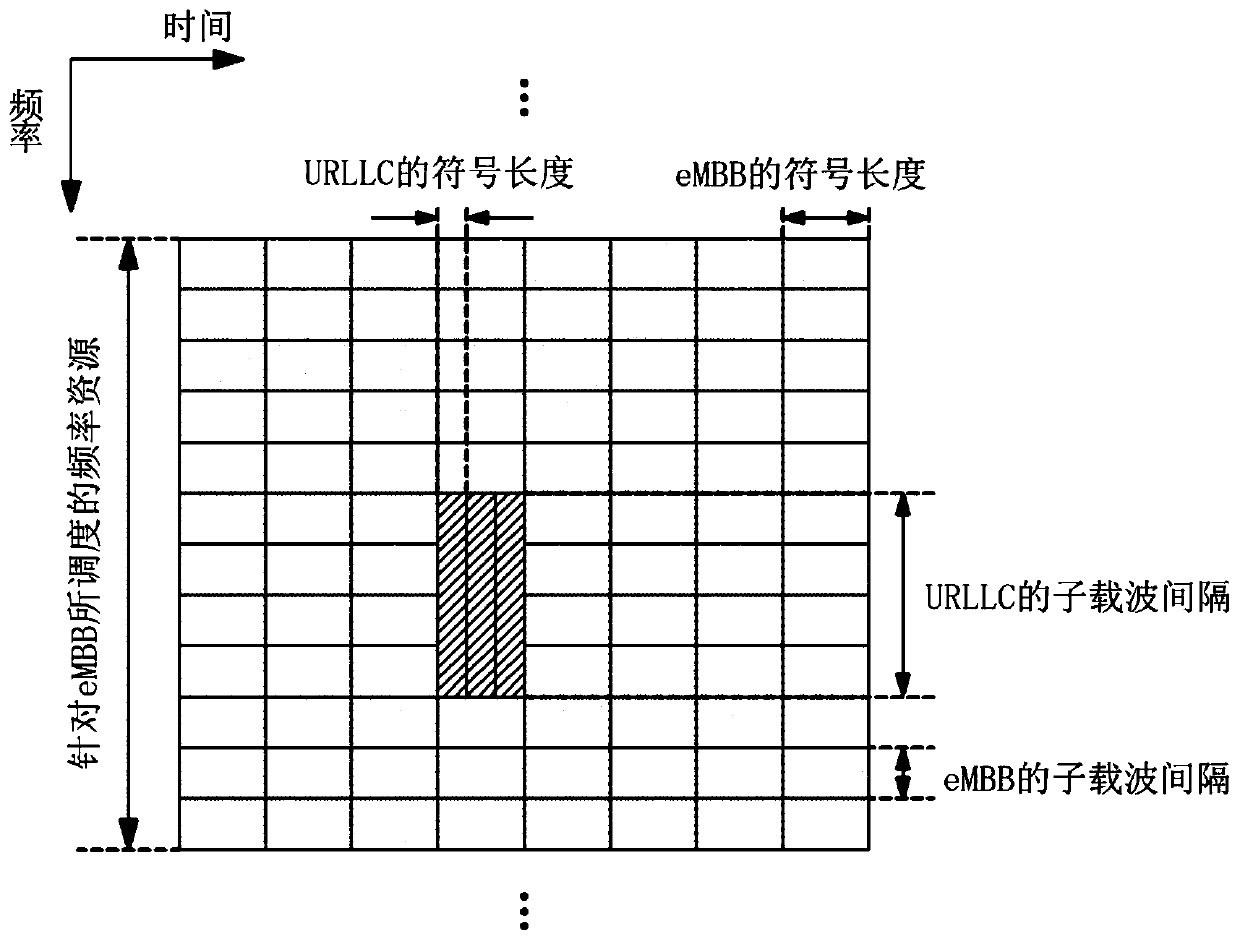Method and apparatus for transmitting and receiving downlink signal in next generation wireless network
A downlink and signal technology, applied in the field of high-efficiency multiplexing, can solve problems such as efficient allocation of resource constraints, achieve high-efficiency multiplexing, prevent processing and data loss
- Summary
- Abstract
- Description
- Claims
- Application Information
AI Technical Summary
Problems solved by technology
Method used
Image
Examples
Embodiment 1
[0101] Embodiment 1: Indicate through cell-specific (or time slot-specific) signaling
[0102] The NR cell / base station may transmit cell-specific notification information (the aforementioned DL preemption indication information) for resources on which puncturing for eMBB data is performed or resources on which eMBBDL data and URLLC DL data are superimposed on each other for URLLC data is transmitted in time-domain scheduling units (eg, slots or aggregated slots) defined for eMBB UEs. In addition, the base station may transmit the DL preemption indication information in a UE common signaling manner or a UE group common signaling manner.
[0103] Specifically, when pre-notification-based dynamic puncturing or post-notification-based dynamic puncturing is applied, the base station can use cell-specific or UE common / UE group common signaling to perform Information about the resource on which URLLC data was transmitted in the previous slot (when post-notification is applied) or...
Embodiment 2
[0109] Embodiment 2: UE-specific or timeslot-specific indication
[0110] The NR cell / base station can transmit UE-specific notification information (DL preemption indication information) for resources on which puncturing of eMBB data is performed or resources on which eMBB DL data and URLLC DL data are superimposed on each other The URLLC data is transmitted in time-domain scheduling units (for example, time slots or aggregated time slots) defined by the eMBB UE.
[0111] Specifically, when pre-notification-based dynamic puncturing or post-notification-based dynamic puncturing is applied, for eMBB UEs for DL data resource allocation, in case one or more of the resources allocated for transmitting the corresponding data are used for transmitting URLLC data, this may be performed per eMBB UE by enabling UE-specific signaling Unicast to perform.
[0112] For example, in the case of applying the pre-notification method, transmission of DL (or UL) for the corresponding UE in...
PUM
 Login to View More
Login to View More Abstract
Description
Claims
Application Information
 Login to View More
Login to View More - R&D
- Intellectual Property
- Life Sciences
- Materials
- Tech Scout
- Unparalleled Data Quality
- Higher Quality Content
- 60% Fewer Hallucinations
Browse by: Latest US Patents, China's latest patents, Technical Efficacy Thesaurus, Application Domain, Technology Topic, Popular Technical Reports.
© 2025 PatSnap. All rights reserved.Legal|Privacy policy|Modern Slavery Act Transparency Statement|Sitemap|About US| Contact US: help@patsnap.com



